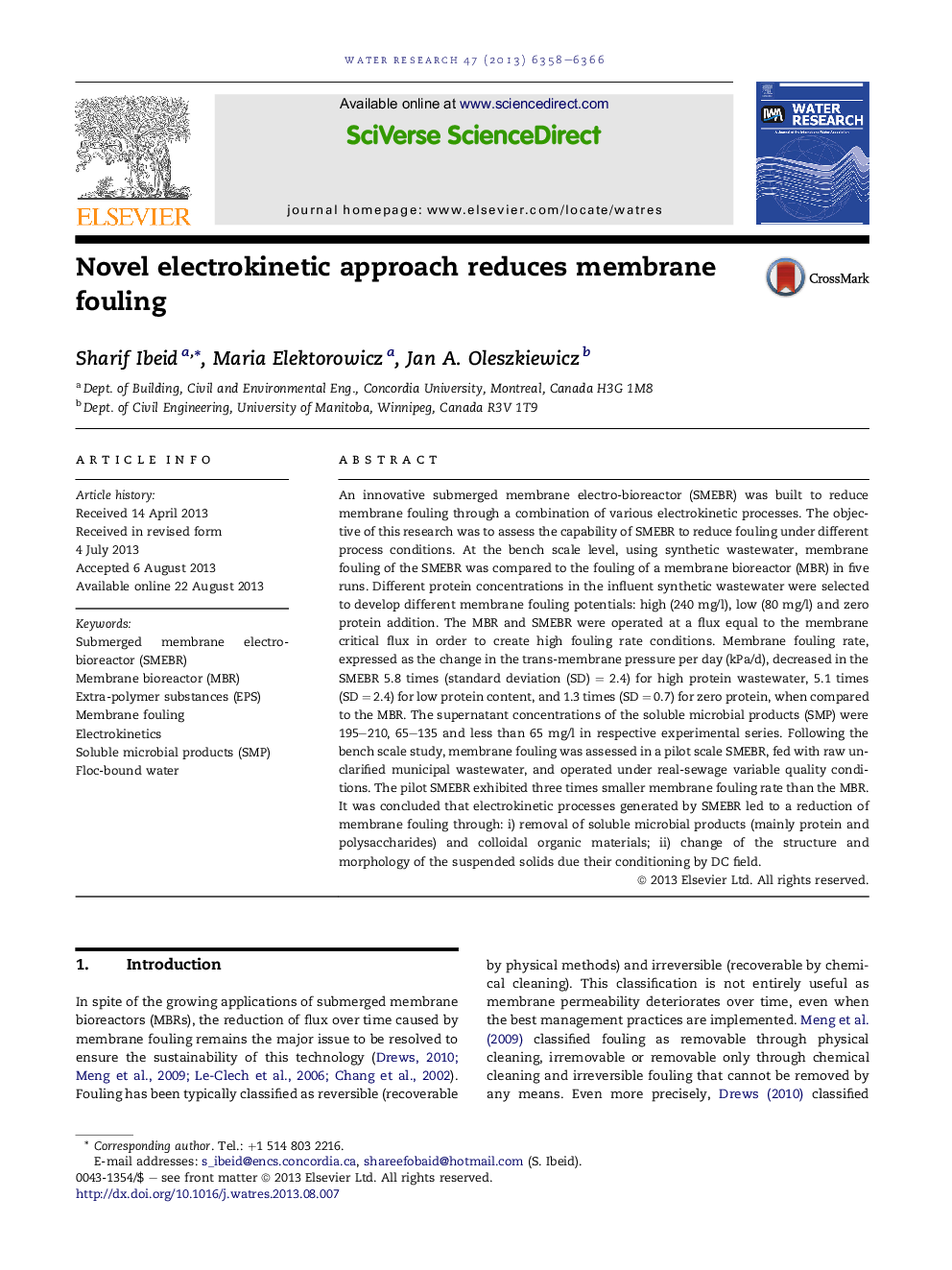| کد مقاله | کد نشریه | سال انتشار | مقاله انگلیسی | نسخه تمام متن |
|---|---|---|---|---|
| 6367336 | 1316837 | 2013 | 9 صفحه PDF | دانلود رایگان |
- Electrokinetic was successfully applied to substantially reduce membrane fouling.
- Mechanisms of membrane fouling reduction through electrokinetic were identified.
- Electrokinetically conditioned activated sludge was found to have less fouling potential.
- Membrane fouling reduction depended on sludge and feed wastewater characteristics.
- Membrane fouling reduction was explored under synthetics and un-clarified raw wastewater.
An innovative submerged membrane electro-bioreactor (SMEBR) was built to reduce membrane fouling through a combination of various electrokinetic processes. The objective of this research was to assess the capability of SMEBR to reduce fouling under different process conditions. At the bench scale level, using synthetic wastewater, membrane fouling of the SMEBR was compared to the fouling of a membrane bioreactor (MBR) in five runs. Different protein concentrations in the influent synthetic wastewater were selected to develop different membrane fouling potentials: high (240Â mg/l), low (80Â mg/l) and zero protein addition. The MBR and SMEBR were operated at a flux equal to the membrane critical flux in order to create high fouling rate conditions. Membrane fouling rate, expressed as the change in the trans-membrane pressure per day (kPa/d), decreased in the SMEBR 5.8 times (standard deviation (SD)Â =Â 2.4) for high protein wastewater, 5.1 times (SDÂ =Â 2.4) for low protein content, and 1.3 times (SDÂ =Â 0.7) for zero protein, when compared to the MBR. The supernatant concentrations of the soluble microbial products (SMP) were 195-210, 65-135 and less than 65Â mg/l in respective experimental series. Following the bench scale study, membrane fouling was assessed in a pilot scale SMEBR, fed with raw un-clarified municipal wastewater, and operated under real-sewage variable quality conditions. The pilot SMEBR exhibited three times smaller membrane fouling rate than the MBR. It was concluded that electrokinetic processes generated by SMEBR led to a reduction of membrane fouling through: i) removal of soluble microbial products (mainly protein and polysaccharides) and colloidal organic materials; ii) change of the structure and morphology of the suspended solids due their conditioning by DC field.
Journal: Water Research - Volume 47, Issue 16, 15 October 2013, Pages 6358-6366
